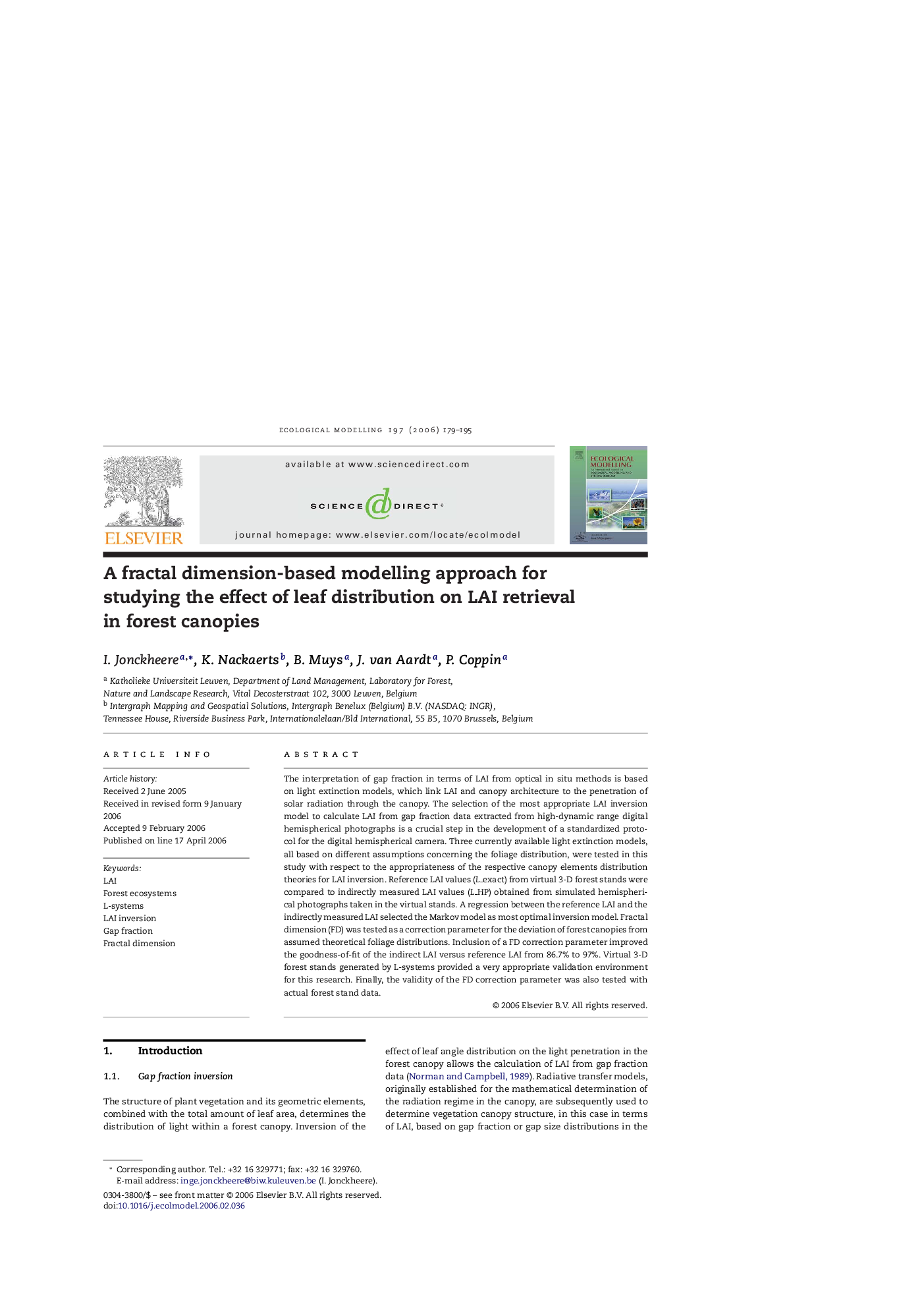| Article ID | Journal | Published Year | Pages | File Type |
|---|---|---|---|---|
| 4378907 | Ecological Modelling | 2006 | 17 Pages |
The interpretation of gap fraction in terms of LAI from optical in situ methods is based on light extinction models, which link LAI and canopy architecture to the penetration of solar radiation through the canopy. The selection of the most appropriate LAI inversion model to calculate LAI from gap fraction data extracted from high-dynamic range digital hemispherical photographs is a crucial step in the development of a standardized protocol for the digital hemispherical camera. Three currently available light extinction models, all based on different assumptions concerning the foliage distribution, were tested in this study with respect to the appropriateness of the respective canopy elements distribution theories for LAI inversion. Reference LAI values (L_exact) from virtual 3-D forest stands were compared to indirectly measured LAI values (L_HP) obtained from simulated hemispherical photographs taken in the virtual stands. A regression between the reference LAI and the indirectly measured LAI selected the Markov model as most optimal inversion model. Fractal dimension (FD) was tested as a correction parameter for the deviation of forest canopies from assumed theoretical foliage distributions. Inclusion of a FD correction parameter improved the goodness-of-fit of the indirect LAI versus reference LAI from 86.7% to 97%. Virtual 3-D forest stands generated by L-systems provided a very appropriate validation environment for this research. Finally, the validity of the FD correction parameter was also tested with actual forest stand data.
